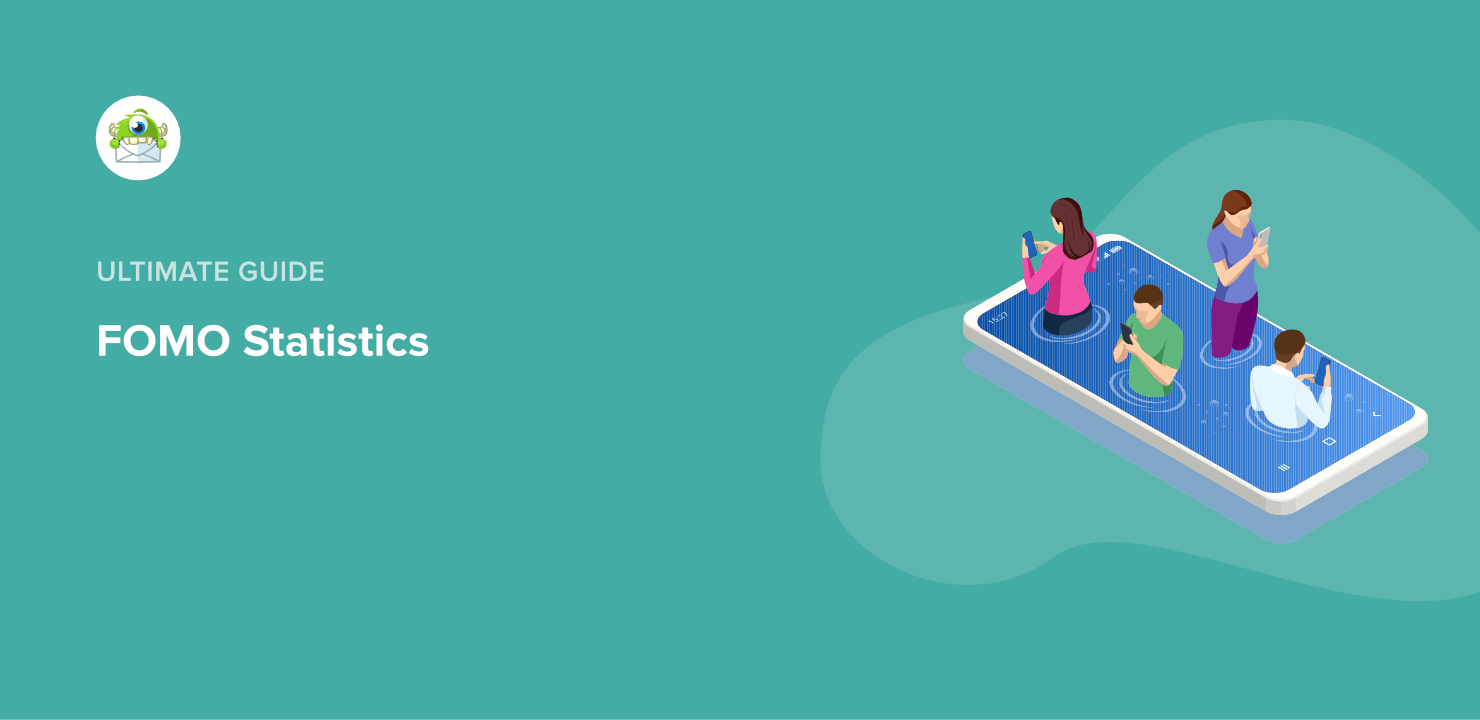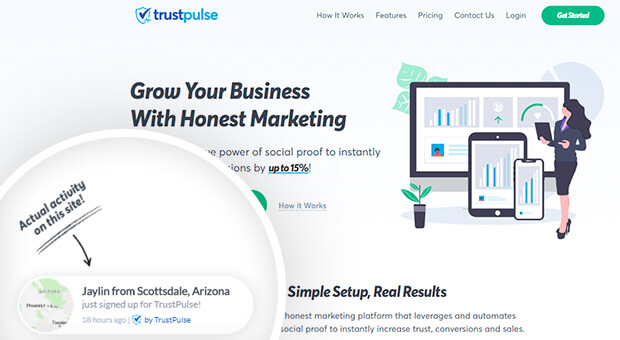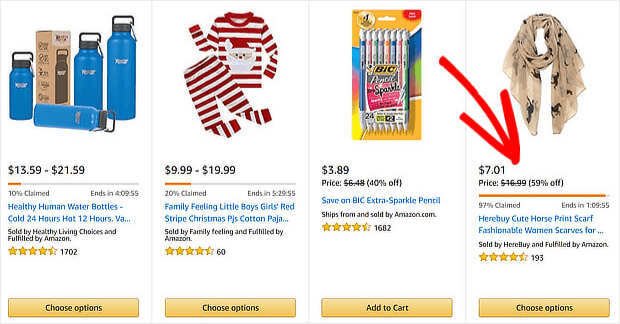If you’re wondering how you can use fear of missing out to increase your sales—and you want some solid proof to back it up—we’ve got some FOMO statistics you’re going to love.
In this article, we share 25+ powerful stats for 2025, covering everything from what causes FOMO to how to drive sales with FOMO marketing.
25+ FOMO Statistics (2025)
We’ve pulled together FOMO-related stats to show you the true power of this marketing tactic.
Let’s start by looking at which group of people experiences FOMO the most.
Who Experiences FOMO?
According to the research, there’s one particular generation that experiences FOMO the most. And, they’re also the most likely to create FOMO in others as well.
Can you guess which generation it is?
That’s right, millennials!
People often mix up millennials with teenagers. But millennials are actually 23-38 years old and they spend money.
Millennials spend more per year on groceries, gas, restaurants, their cell phone, hobbies, electronics, and clothing.
In fact, 60% of millennials spend more than $4 on a single coffee and 69% of millennials buy clothes for reasons beyond basic necessity.
Now that you know millennials are big-spenders, let’s find out how FOMO affects them.
- Nearly 7 in 10 (69%) of millennials experience FOMO, the most of any age group.
- Millennials are the most likely to purposely try to create FOMO among their peers, with 33% saying they have done so compared to 12% of those in other age groups.
- Those with household incomes above $75,000 a year were not only the most likely to experience FOMO but also the most likely to share their experiences on social media with the intent of creating the sensation in others.
What Are the Effects of FOMO?
FOMO is a real feeling. So, it has real effects too. These statistics show how FOMO makes people feel and what actions the feeling causes them to take.
- Most of the emotions that were experienced with FOMO seem negative: 39% reported feeling envious, 30% said they felt jealous and 21% said they felt sad or disappointed, with only 29% reporting feeling happiness.
- However, the same report shows that millennials are adopting more positive views of envy and jealousy, using them as motivating factors for taking positive action, like making a purchase or scheduling a trip.
- 60% of millennial consumers said they make a reactive purchase after experiencing FOMO, most often within 24 hours.
- In a FOMO study, nearly half of Millennials surveyed attend live events so they have something to share online.
- 40% of millennials overspend or go into debt to keep up with their friends
FOMO on Social Media
Because FOMO started out as a social media thing, let’s go over some social media-specific FOMO statistics.
- 56% of people are afraid of missing out on events, news and important status updates if they are away from social networks.
- Facebook is the most common FOMO contributor (72%), followed by Instagram (14%), Twitter (11%), and Pinterest (8%).
- About 51% of people visit or log on more frequently to social networks than they did just two years ago.
- About 27% of people head to social media right when they wake up.
- The big things that create FOMO among millennials are travel (59%), parties and events (56%) and food (29%).
Those are the basics of FOMO statistics, you’ve got ‘em down. Now, let’s take a look at some FOMO statistics that can help you increase sales with FOMO marketing.
Online Reviews and FOMO
Did you know that FOMO can be created with online reviews? When a consumer sees that others are having a great time using your product/service, they’ll want to buy it for themselves too.
It’s just one of the ways your business can use FOMO to generate more sales.
Here are some FOMO and online review stats.
- Studies show 92% of online consumers look at a product review prior to making a purchase.
- Product reviews are 12X more trusted than product descriptions and sales copy from manufacturers.
- Customers could spend 31% more at a business with great reviews.
- Positive reviews encourage 68% of consumers to use a local business.
- 41% of consumers will be tempted to purchase a product with as few as 1 to 4 reviews.
Create FOMO with User Generated Content
User-generated content is another effective way to use FOMO in your marketing strategy. User-generated content (UGC) is any form of content, like images or videos, that have been posted by users on online platforms like social media sites.
Similar to online reviews, when a user sees a photo posted by a friend on social media that features a cool new product, they’ll want to get it for themselves.
Take a look at these user-generated content and FOMO statistics to find out just how effective this strategy is.
- Millennials spend 18 hours per day with media, and 30% of that time is spent looking at user-generated media.
- 85% of consumers find visual UGC more influential than brand photos or videos.
- 48% of customers say that UGC is a great way to discover new products.
- 84% of millennials report that user-generated content has some influence on what they buy.
- Companies that incorporated UGC into their websites see an 18% increase in revenue.
Check out how ColorPop incorporated UGC on their website in the example below:
When their website visitors see the amazing makeup looks people just like them are creating using ColorPop products, they won’t want to miss out on trying it for themselves.
User-generated content acts as social proof by showing that people are actually buying and using your products. But you can also display social proof on your website by using a social proof tool like TrustPulse.
TrustPulse is a social proof notification app that displays real-time activity on your website. It shows your website visitors notifications every time someone signs up for your email list, registers for a demo, makes a purchase, and more. And that builds trust and creates FOMO.
The best part? TrustPulse can increase conversions by up to 15%!
Use Scarcity and Urgency for FOMO Marketing
Like we mentioned, the meaning of FOMO is the fear of missing out, and one thing shoppers hate missing out on is a good deal. That’s why many marketers use scarcity and urgency to create FOMO.
If a shopper knows a deal isn’t going to last long or there are only a few items left, they’ll be sure to take action before it’s too late.
Here’s an example from Amazon.
They show that the sale for the scarf ends in just over 1 hour and that 97% of the item has already been claimed, making it urgent for users to act immediately if they want this great deal.
Take a look at these statistics about using scarcity and urgency for FOMO marketing:
- When items are scarce, they’re often perceived as more valuable.
- Under perceived scarcity conditions consumers exhibit buying behaviors like urgency to buy.
- Countdown timers and limited-time offers create a sense of consequence and fear of missing out. The presence of the timer alone created an 8.6% lift in conversions.
That’s a wrap! Now you understand the true power of FOMO.
With these FOMO statistics, you can master the art of FOMO marketing so that your leads and customers won’t want to miss out on anything you’re offering.
Sources (aka, “Everything We Went Through so You Didn’t Have To”):
Mashable | Adweek | Bizrate Insights | Econsultancy | Strategy | Credit Karma | Business2Community | Hosting Tribunal | CrowdRiff | Stackla | Telescope | Skift | Annex Cloud | Taylor and Francis Online | Forbes

















Add a Comment